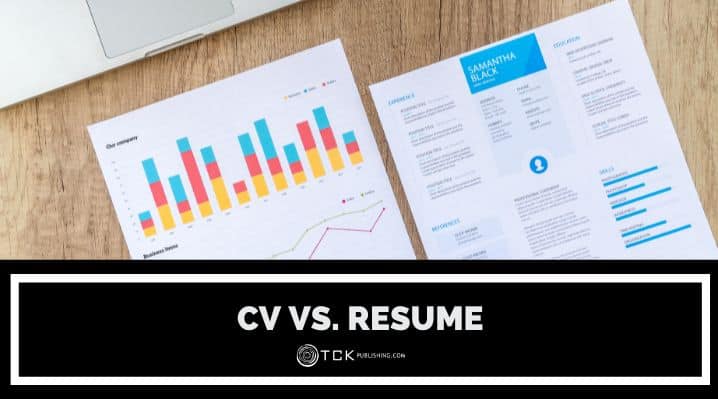
When you’re just starting as a writer, understanding what documents you need is overwhelming. Maybe someone asked you for a CV, but you only have a resume—or vice versa. Aren’t they basically the same thing? Not quite!
Both showcase your skills and experience, but they serve different purposes. Here’s a clear breakdown to help you decide which one you need.
What is a Resume?
A resume is a short, focused document that highlights your most relevant skills, experiences, and achievements for a specific job or opportunity. It’s like your professional highlight reel.
Key Features of a Resume:
- 1–2 pages max.
- Focuses on skills and achievements that match the role.
- Uses bullet points and clear headings for quick scanning.
When Writers Need a Resume:
- Applying for freelance writing jobs (e.g., content writing, blogging, copywriting).
- Pitching for marketing or editorial positions.
- Seeking corporate roles, like a technical writer or social media manager.
Example: If you’re applying to write blog posts for a tech company, your resume should focus on related skills—like SEO knowledge, writing experience, and examples of previous work.
What is a CV?
A CV, or Curriculum Vitae, is a longer, more detailed document. It covers your entire professional and academic history. Think of it as your complete career timeline.
Key Features of a CV:
- Usually 2+ pages (there’s no strict limit).
- Includes education, publications, awards, presentations, and more.
- Provides a broad overview of your achievements.
When Writers Need a CV:
- Applying for academic positions (like teaching creative writing).
- Submitting work for literary grants or fellowships.
- Applying for research roles or speaking opportunities for writing conferences.
Example: If you’re applying for a fellowship that requires a list of published works, a CV would be the right choice.
Why Do Resumes and CVs Get Mixed Up?
It’s easy to confuse resumes and CVs because they have overlapping content and different uses depending on the region.
- Regional Differences: In the United States, resumes are standard for job applications, while CVs are reserved for academia and research. But in Europe and other parts of the world, “CV” is often used to describe what Americans would call a resume.
- Content Overlap: Both resumes and CVs share similar sections, such as work experience, education, and contact information. For beginners, this overlap can make them seem interchangeable.
- Lack of Clarity: Employers sometimes use the terms “resume” and “CV” interchangeably in job descriptions, adding to the confusion.
Look for context clues if you’re unsure what a job posting requires. Tailor your document to highlight what matters most.
General Tips When Submitting an Application
Tailor for the Role:
- Highlight skills, experience, or accomplishments most relevant to the specific job or opportunity.
- Use keywords from the job posting to pass Applicant Tracking Systems (ATS) if applicable.
Use a Professional Format:
- Use clear headings (e.g., “Work Experience,” “Education,” “Skills”) to organize content.
- Stick to easy-to-read fonts like Arial or Times New Roman, with a font size between 10-12 points.
- Keep margins clean (around 1 inch) for a professional look.
Be Concise:
- Use bullet points for achievements or responsibilities.
- Write in active voice.
- Avoid long paragraphs or vague phrases like “Responsible for tasks.”
Example: “Increased team productivity by 20% through process optimization” instead of “Responsible for managing team processes.”
Quantify Achievements:
Include specific metrics or outcomes wherever possible to demonstrate the impact of your work (e.g., “Boosted sales by 30% in six months”).
Example: Instead of “Wrote blogs for various clients,” try “Created SEO-optimized blog content that increased client traffic by 25%.”
Proofread Thoroughly:
- Check for typos, grammar errors, and formatting inconsistencies.
- Ask someone else to review your document for clarity and professionalism.
Include Contact Information:
- Always provide your full name, phone number, email address, and LinkedIn profile (if applicable).
Common Mistakes to Avoid
- Overloading with Irrelevant Information: Only include what enhances your candidacy for the specific role.
- Using General Descriptions: Avoid vague phrases like “Responsible for tasks” without specifying accomplishments.
- Inconsistent Formatting: Ensure consistent font sizes, styles, and spacing throughout.
- Including Personal Information: Avoid unnecessary details like marital status, photo (unless required), or age.
- Over-reliance on Templates: While templates can help with structure, customize the content and format to your needs.
Additional Resources
- r/resumes (Reddit): A community where you can get feedback on your resume, learn formatting tips, and ask questions.
- LinkedIn Learning: Offers courses on resume writing, CV creation, and optimizing job applications.
- University Career Centers: Many academic institutions share sample CVs and offer tailored advice.
- Books: Look for books that are specifically tailored to job seekers. What Color is Your Parachute? by Richard N. Bolles is a great start.
- Professional Writing Organizations: Often have resume/CV examples tailored for freelance or creative work.
How do you build your CV or resume? Share your thoughts below!
If you enjoyed this post, then you might also like:
- How to Make Plans: 7 Tips for Effective Strategizing in Life and Work
- 5 Signs You’re in a Toxic Work Environment (and What To Do About It)
- How to Find Happiness at Work: 4 Keys to Greater Contentment on the Job
- What Does a Virtual Assistant Do? Tips for Hiring Remote Workers

Cole is a blog writer and aspiring novelist. He has a degree in Communications and is an advocate of media and information literacy and responsible media practices. Aside from his interest in technology, crafts, and food, he’s also your typical science fiction and fantasy junkie, spending most of his free time reading through an ever-growing to-be-read list. It’s either that or procrastinating over actually writing his book. Wish him luck!
